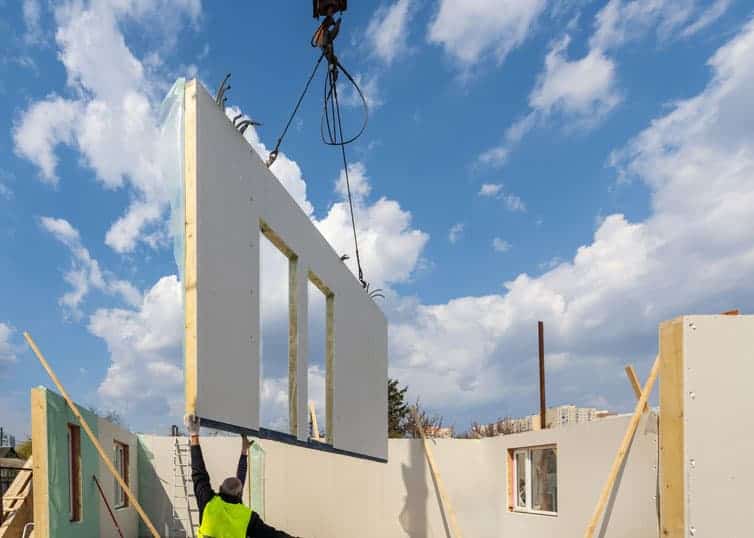In the fast-paced world of real estate, accurate and timely data is paramount. Multiple Listing Services (MLSs) serve as the backbone of property data distribution across the industry. However, as real estate platforms and brokerages aggregate listings from multiple MLS feeds, a persistent and costly challenge emerges: duplicate listings. The problem is not just a cosmetic annoyance—it can distort market analytics, confuse consumers, and erode trust in real estate platforms. Addressing this issue requires advanced real-time duplicate detection systems designed to ensure data integrity, performance, and scalability.
The Duplicate Listings Problem
Duplicate listings occur when the same property is entered into multiple MLS databases—often due to regional overlaps or multi-agent representation. These duplicate entries can vary slightly in:
-
Address formatting (e.g., “123 Main St” vs. “123 Main Street”)
-
Listing price updates
-
Agent names or brokerage affiliations
-
Property descriptions or image sets
Such discrepancies make it difficult to identify duplicates using simple text-matching algorithms. The result is cluttered search results, inaccurate property counts, and poor user experience for buyers and sellers alike.
Consequences of Duplicate Listings
-
User Confusion: Potential buyers may see the same property multiple times, believing there is more inventory than there actually is.
-
Data Corruption: Aggregated statistics like average days on market, pricing trends, or volume of listings can be skewed.
-
SEO Penalties: Duplicate content across platforms can affect search engine rankings.
-
Increased Infrastructure Costs: Storing and processing redundant listings consumes resources unnecessarily.
Why Real-Time Detection Matters
Many traditional duplicate detection systems operate on batch processing, identifying duplicates after listings are already published. However, in real estate—where listings change rapidly and consumer expectations are high—real-time detection is critical.
Real-time systems can:
-
Flag and suppress duplicates before they appear in user-facing applications
-
Improve the accuracy of analytics dashboards instantly
-
Trigger alerts or merge workflows for agents and data managers
-
Prevent SEO and UX issues from the outset
Key Components of a Real-Time Detection System
Building an effective real-time duplicate detection system for MLS feeds involves a combination of data engineering, machine learning, and scalable architecture.
Data Ingestion & Normalization
MLS feeds come in varying formats (e.g., RETS, RESO Web API, XML). A robust ingestion pipeline must:
-
Normalize field names and formats
-
Standardize addresses using tools like Google Places API or USPS APIs
-
Handle updates and de-listings efficiently
Feature Engineering
Detecting duplicates requires creating “comparable signatures” for listings. Key features include:
-
Geolocation: Latitude and longitude derived from address
-
Normalized Address Strings: Removing unit numbers or standardizing abbreviations
-
Image Hashing: Generating perceptual hashes (e.g., pHash or aHash) for image comparison
-
Text Embeddings: Using NLP techniques (like BERT) to compare property descriptions
-
Property Metadata: Price, number of bedrooms, square footage, and listing dates
Similarity Scoring
A scoring engine compares new listings against existing ones to determine the likelihood of duplication. Techniques include:
-
Fuzzy Matching: Levenshtein distance, Jaro-Winkler for strings
-
Cosine Similarity: Applied to image hashes and text embeddings
-
Machine Learning Models: Supervised models trained on labeled duplicates vs. non-duplicates
-
Graph-Based Approaches: Representing listings as nodes and connections between them as similarity scores
A dynamic threshold system helps classify listings as duplicates, potential matches, or unique.
De-duplication Actions
Once duplicates are identified, platforms must determine how to handle them:
-
Merge Listings: Combine data from multiple feeds into a single unified listing
-
Suppress Redundant Entries: Hide less complete or outdated versions
-
Flag for Review: Notify admins or listing agents for manual resolution when confidence is low
Feedback Loop & Continuous Learning
Incorporating agent or admin feedback on false positives/negatives allows the system to improve over time. A retrainable ML pipeline ensures adaptability as data changes.
Challenges in Implementation
Despite its benefits, real-time de-duplication poses several challenges:
-
Latency: Real-time detection must operate under strict time constraints (often <1 second per listing).
-
Data Volume: Major aggregators process hundreds of thousands of listings daily.
-
Edge Cases: Multi-unit listings, recent renovations, or dual-listings by agents can confuse even advanced models.
-
Privacy & Compliance: Respecting MLS agreements and data use policies during cross-listing comparison.
Future Trends
The real estate tech ecosystem is evolving, and duplicate detection will evolve with it. Emerging trends include:
-
Cross-Platform Intelligence: Detecting duplicates across MLS and non-MLS sources like iBuyer platforms or FSBO listings.
-
AI-Powered Valuation & Verification: Linking duplicate detection with valuation models to detect outlier pricing or fraud.
-
Blockchain-Backed Listing IDs: A universal listing identifier protocol could help solve duplication at the source.
Conclusion
Duplicate listings are a solvable—but complex—problem in the real estate data ecosystem. A well-architected real-time detection system can eliminate redundancy, enhance consumer trust, and improve analytics accuracy. As the industry moves toward greater transparency and data standardization, proactive de-duplication will become a cornerstone of competitive, data-driven platforms.

By investing in advanced real-time technologies, real estate platforms can ensure that their listings are not just comprehensive—but clean, reliable, and user-centric.
Frequently Asked Questions
Why is real-time duplicate detection important in MLS feed aggregation?
Real-time duplicate detection is crucial in MLS feed aggregation because real estate listings are time-sensitive and directly affect user experience, analytics, and business operations. Without real-time detection:
-
Users may see duplicate listings, leading to confusion and mistrust.
-
Analytics become unreliable, such as inflated property counts or misleading market trends.
-
SEO performance suffers due to repeated content.
-
Back-end systems waste resources, storing and processing redundant data.
Real-time detection ensures that duplicates are identified and suppressed before reaching end-users, improving platform reliability, data integrity, and system performance.
What challenges make duplicate detection across MLS feeds complex?
Several factors contribute to the complexity:
-
Variations in data representation: The same property may be listed with slight differences in address, agent info, photos, or price.
-
Different formats: MLS feeds may use varying schemas (RETS, RESO Web API, etc.), making normalization challenging.
-
High volume and velocity: Large platforms process thousands of listings per hour, requiring high-speed detection.
-
Lack of a universal property ID: Unlike SKUs in retail, there’s no shared identifier for listings across MLSs.
-
Edge cases: Multi-unit properties, updated listings, or shared sales agents may resemble duplicates but are distinct.
These challenges require sophisticated matching algorithms and a flexible, intelligent detection pipeline.
How can machine learning improve duplicate detection accuracy?
Machine learning enhances accuracy by learning from patterns and edge cases that rule-based systems might miss. It can:
-
Learn complex feature interactions: For instance, the model might learn that minor differences in price are acceptable if the address and images match.
-
Generalize across formats: ML models trained on diverse MLS data can adapt to varying feed structures.
-
Incorporate feedback: Misclassified listings (false positives or negatives) can be used to retrain and refine models.
-
Prioritize high-risk listings: Models can flag listings that are highly similar but not identical, prompting manual review.
Popular ML techniques include gradient boosting (e.g., XGBoost), logistic regression, or deep learning models using embeddings for text and images.
What features are most useful when engineering a duplicate detection model?
The most effective features often include:
-
Normalized address fields: Street name, number, unit, ZIP code.
-
Geospatial coordinates: Latitude and longitude rounded to specific precision.
-
Listing metadata: Price, number of bedrooms/bathrooms, square footage.
-
Text embeddings: Vector representations of property descriptions.
-
Image hashes: To compare visuals between listings.
-
Listing date and source: Helps identify which version is more recent or authoritative.
Combining these into a rich feature set allows the model to evaluate listings holistically, improving detection reliability.
What methods are commonly used to detect duplicates in real time?
Real-time duplicate detection uses a combination of:
-
Data normalization: Standardizing fields like addresses, names, and phone numbers.
-
Image hashing: Generating perceptual hashes (e.g., pHash) to compare listing photos.
-
Text similarity: NLP models (like BERT embeddings) analyze property descriptions.
-
Fuzzy string matching: Algorithms like Levenshtein distance to match addresses.
-
Geolocation comparison: Using latitude/longitude for proximity checks.
-
Machine learning models: Supervised classifiers trained on known duplicates.
-
Composite scoring: Aggregating similarity scores to determine match confidence.
These methods work together in real-time pipelines to evaluate whether a new listing matches any existing records.













